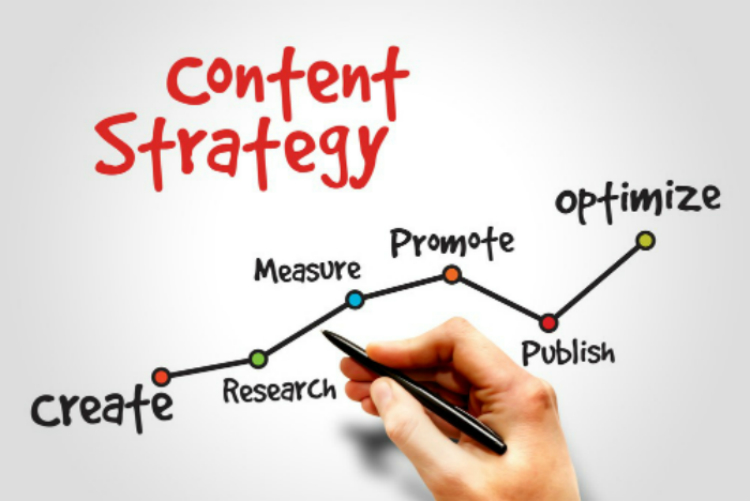If you want to grow a business from the ground up, content creation is the place to start. Well planned and structured content is the best way to boost brand recognition, generate leads and educate readers. In 2021 82% of marketers report actively using content marketing, up 70% from 2020. So it must be achieving results.
But knowing what content to create and how to keep track of it can be tricky. Especially if your ideal customers are on several different platforms.
It’s easy to get bogged down in questions.
- What to post?
- Where to post it?
- How often?
- How to check its success?
Confusing ,eh?
But here’s the good news: There’s a much simpler way.
Bye-bye frustration station, hello killer content creation.

Step 1. Create a Content Marketing Strategy
The key word here is strategy, which is just a fancy word for planning!
But truthfully, there’s a lot to think about with content creation. For example, how much awareness do readers have about the brand? What problems are you trying to solve? Are posts designed to educate or entertain?
A content plan should include:
- Clearly defined goals. What’s the aim of each piece of content? SEO, engagement, link building, entertainment, education, or selling?
- The target audience
- What type of content will be produced and who’s creating it
- How the content covers different awareness stages
- A unique approach to help the business stand out
Step 2. Use a Content Calendar
A content calendar helps keep brand messaging organized while ensuring the content covers all aspects of the bigger picture.
It also helps with brainstorming. Writing down initial ideas onto a draft calendar is a great way to plan out chunks of content. Calendar planning helps the content flow more consistently and takes the readers on a journey.
Using a calendar helps to:
- Keep track of a variety of content spread over a variety of channels
- Create a framework of content themes over the year
- Plan content around special holidays or specific seasons
Once the content ideas are in place, it’s much easier to produce.

Step 3. It’s Time to Get Creative with Content
Content isn’t just about blog posts and articles. There are a whole host of different forms of content to utilize to best reach a target audience. Video, social media posts, case studies, podcasts, emails, infographics – the list is endless.
But remember to research which content suits the ideal audiences best. For example, don’t spend hours creating Instagram reels if the majority of your audience prefers emails.
If coming up with content ideas is challenging, check out a few competitor sites for ideas. Never copy. That infringes on intellectual property (and really, it’s just downright unethical) but it’s ok to use their content for inspiration.
Google Trends and Exploding Topics are also good places to find ideas. Take a look at what topics are trending and see if there’s any way of creating relevant content.
Make creating content easy with these simple tips:
- Set a schedule and create a workflow
- Use customizable templates to help with different types of content
- Take copywriting courses to get inspiration hire or a copywriting agency to help
Step 4. Repurpose Old Blog Posts and Content
There’s no need to reinvent the wheel when it comes to content creation. Instead, take a look back through the archives and if there’s a piece of content that’s still relevant, revamp it.
For example, if it’s a post titled “How To Successfully Train For A Triathlon”, spin the information into a blog post called “5 Common Mistakes When Training For A Triathlon”.
Use old content successfully by:
- Repurposing content that previously created lots of engagement
- Turning blog posts into videos (or podcasts) and vice versa
- Linking old content to new trends and making it relevant

Step 5. Schedule Content to Free-up Time
Posting on Instagram, Facebook, YouTube, plus various other media accounts gets confusing.
More than that, it’s time-consuming. Content not only needs posting (often out of business hours), but if it’s to be successful, it also needs to engage with the audience.
To save time and allow more freedom to respond to readers’ comments, use a scheduling tool. There are a variety of options available online, both free and paid.
Even better, most scheduling tools offer more advanced insights than the usual social media analytics. Thus, helping businesses maximize the impact of their content.
Step 6. Evaluate and Check the Data
The final step in streamlining content creation is checking the data. There’s little point in spending time generating content if it isn’t achieving the desired results. Tapping into linked analytics is the best way to figure out which content works the best.
But here’s the thing:
Although Facebook and Instagram make it easy to see posts get the most engagement through likes and comments, it’s a little trickier for website content and blog posts.
Google Analytics and Google Search Console are the easiest way to check content performance. But not all data needs to come from an online platform.
Asking the audience what they think of the content (using surveys and research) is a great way to ascertain whether content creation is on the right track.
Content creation needn’t be a chore. Instead, it should be an integral and successful part of every business.
Every business wants to build trust and loyalty while bringing potential customers through a sales funnel. Content marketing (when done correctly) achieves those goals.
Following this step-by-step guide and creating content that educates, entertains, and engages, makes generating new leads and nurturing existing customers simpler.
About the Author

Liz Slyman: Over the past decade, Liz has worked as a copywriter and digital marketing executive for a multitude of companies from startups to and mid-sized businesses to working as the VP of marketing for award-winning, platinum-selling artists. Leveraging an understanding of the nuance of language in marketing, Liz founded Amplihigher, a content marketing and copywriting agency, designed to connect consumers to companies in a way that results in next-level brand expansion.


